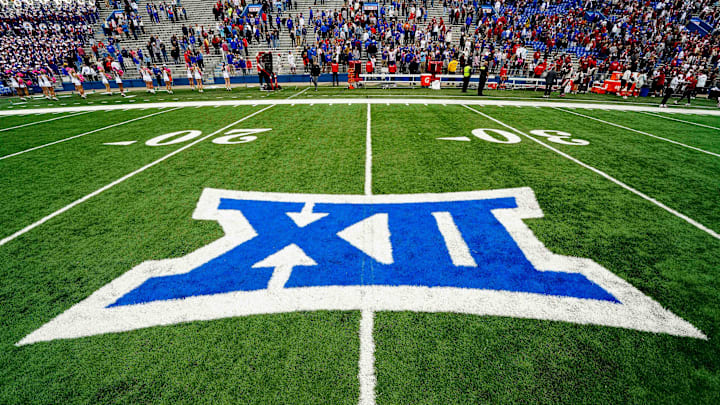While the Big Ten has long been considered one of the powerhouses of college football, with perennial contenders like Michigan, Ohio State, and Penn State, it seems like the Big 12 might actually have more depth from top to bottom. Depth refers not just to the strength of the top teams, which would obviously reside in the favor of the Big Ten, but to the overall competitiveness of the entire conference. Several factors support this argument:
1. Competitive Parity
In recent seasons, the Big 12 has showcased more parity. Unlike the Big Ten, which often sees the same teams (Michigan and Ohio State) dominate year after year, the Big 12 title race is more open. Programs like Kansas State, Oklahoma State, TCU, Texas Tech, and Baylor have all been capable of knocking each other off, making the league unpredictable and competitive on a weekly basis. Every week can lead to an upset and this makes the league fun to watch on a week to week basis.
In the Big 12 we have seen five different teams win the championship in as many years, whereas the Big 10 has only had three different teams win in the last eight years. Oregon is the latest team to crash the party, but the previous seven years were Michigan three times in a row and then Ohio State four years in a row.
2. Middle-Tier Programs That Can Beat Anyone
The Big 12's middle-tier teams often pull off upsets. In a given season, it's not unusual for teams like West Virginia, Iowa State, or even Kansas to beat higher-ranked opponents. That kind of volatility speaks to strong depth. In the Big Ten, the gap between the top and bottom teams is often much wider; programs like Indiana, Northwestern, and Rutgers struggle to consistently compete with the top dogs.
For example, this upcoming season, there are three teams with an 8.5 win total O/U, five teams with a 7.5 win total O/U, and four teams with 6.5 being their line. That’s twelve teams Vegas has within two games of each other, and the rest of the conference is at 5.5. This goes to show that, even from a betting perspective, any of the teams can come out on top if a few games go their way. Where the Big 10 has the three top dogs, being Ohio State, Oregon, and Penn State, followed by everyone else trailing behind. Not saying there aren’t other competitive teams, but the race for the top is more defined than the Big 12 remains to be.
3. No Divisions = Stronger Scheduling
The Big 12 uses a round-robin schedule, meaning every team plays every other team. That ensures more consistent strength of schedule across the board. In contrast, the Big Ten (before its 2024 realignment) had divisions, and the East Division was much stronger than the West. This imbalance led to lopsided matchups and less clarity about the overall strength of the conference.
There were many years of the West division constantly winning the conference title because that side consisted of Penn State, Michigan, and Ohio State. They have since changed it the postseason format with the two top teams making the Championship Game, but this has gone overlooked when seeing how competitive each conference has been.
4. Emerging Programs and Transfer Portal Usage
Several Big 12 programs have benefited from the transfer portal and new coaching hires. Schools like UCF, BYU, and Houston who are more recent additions to the conference, are investing heavily in football and could bring fresh energy and competitiveness. These programs may not have the brand cachet of Big Ten schools, but they add layers of potential and unpredictability to the Big 12’s depth.
With the newer transfer portal rules and the NIL being a massive factor, you see more and more great players transferring to Big 12 schools looking for opportunities to play. They also know it’s a very competitive league and their chances of getting drafted don’t diminish just because they aren’t in the SEC or Big 10. The NIL has given teams in the Big 12 a fair shot at getting top players in recruiting and through the portal, spreading out the wealth of talent throughout college football.
Conclusion
Although the Big Ten may have more national championship contenders at the very top, the Big 12 arguably offers a deeper, more competitive weekly slate of games. With a wider spread of capable teams, fewer guaranteed wins, and a more balanced structure, the Big 12 could be considered the deeper football conference in terms of overall competition.
